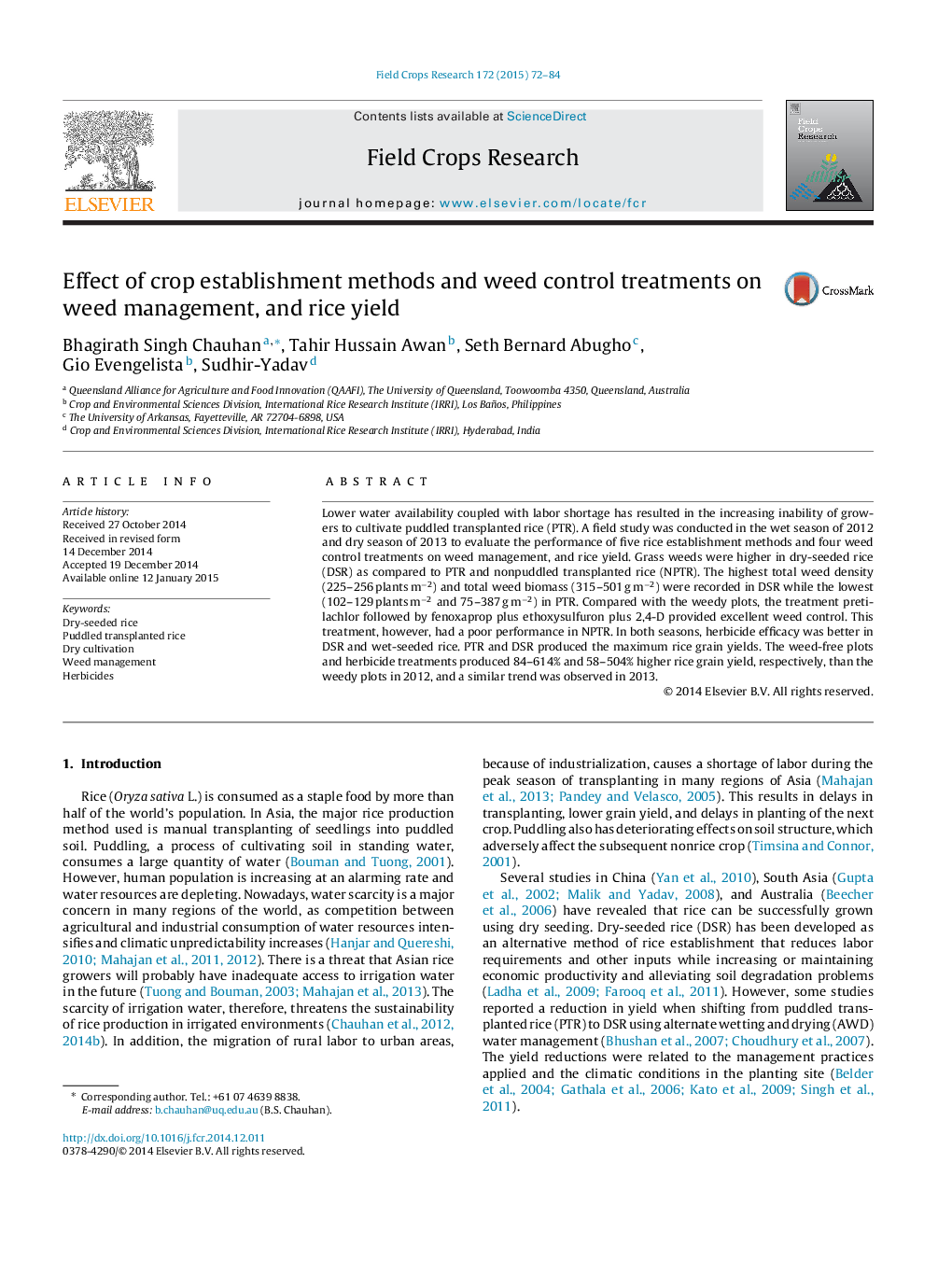| Article ID | Journal | Published Year | Pages | File Type |
|---|---|---|---|---|
| 6374987 | Field Crops Research | 2015 | 13 Pages |
Abstract
Lower water availability coupled with labor shortage has resulted in the increasing inability of growers to cultivate puddled transplanted rice (PTR). A field study was conducted in the wet season of 2012 and dry season of 2013 to evaluate the performance of five rice establishment methods and four weed control treatments on weed management, and rice yield. Grass weeds were higher in dry-seeded rice (DSR) as compared to PTR and nonpuddled transplanted rice (NPTR). The highest total weed density (225-256 plants mâ2) and total weed biomass (315-501 g mâ2) were recorded in DSR while the lowest (102-129 plants mâ2 and 75-387 g mâ2) in PTR. Compared with the weedy plots, the treatment pretilachlor followed by fenoxaprop plus ethoxysulfuron plus 2,4-D provided excellent weed control. This treatment, however, had a poor performance in NPTR. In both seasons, herbicide efficacy was better in DSR and wet-seeded rice. PTR and DSR produced the maximum rice grain yields. The weed-free plots and herbicide treatments produced 84-614% and 58-504% higher rice grain yield, respectively, than the weedy plots in 2012, and a similar trend was observed in 2013.
Related Topics
Life Sciences
Agricultural and Biological Sciences
Agronomy and Crop Science
Authors
Bhagirath Singh Chauhan, Tahir Hussain Awan, Seth Bernard Abugho, Gio Evengelista, Sudhir-Yadav Sudhir-Yadav,
